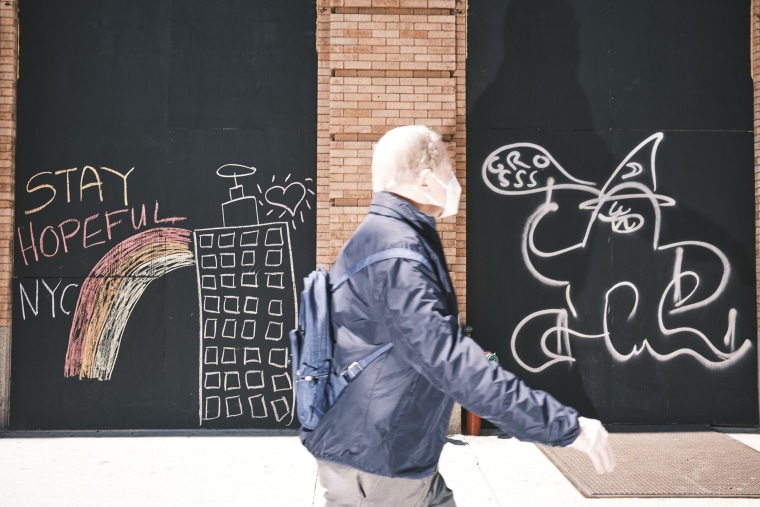Stephen Powers wanted to share his feelings about the coronavirus pandemic.
So he took his spray cans, put on his Willson air-purifying respirator made by Honeywell, rented a scissor lift and went to work, painting a series of wooden panels outside of an Aritzia women’s clothing store in New York City's SoHo neighborhood.
On one panel, Powers, who also goes by ESPO, painted “time is a tide” immersed in a wave. On another, the word “us” is placed onto a boat carrying a sail as a mask. A different panel includes an advertisement for a roommate with the location “just off edge of panic.”
“The whole mural is about being afloat and riding the tides of time and staying up, staying up on the current,” Powers, 51, said.
As hundreds of thousands of people have died from COVID-19 worldwide and everyday life has been disrupted, graffiti art in New York City and elsewhere has reflected mourning and frustrations and hope, and is being used as an outlet for creativity and expression amid shutdowns and panic.
Powers — who's been a graffiti artist for over 30 years — said he received permission for his work outside the Aritzia store from the property owner and plans to auction the work “to benefit a variety of causes.”
“I posted on Instagram some possibilities that I thought could happen in those places, and the good people at Aritzia saw the post and gave me the opportunity to paint their boards,” he said.
“Each of the windows that are covered are maybe 10 by 12 feet, or 11 by 14 feet, and they end up being these really dramatic canvases."
Karla Murray, out with her husband, James Murray, was moved by Powers' work during a walk with their dog, Hudson, especially one panel showing two dogs side by side.
“They had some resemblance to our dog,” Murray, an architectural and interior photographer, told NBC News. “It made us feel that we were a part of the wall even though it wasn’t really Hudson, but it made it feel that way.”
The husband and wife have spent years documenting graffiti and small businesses throughout the city. They've also been highlighting New York City's food and hot spots on YouTube, but in recent weeks the channel has shifted to show the city in lockdown.

Karla said she and her husband have seen more graffiti around the city during the pandemic, although much of what they've been documenting has been vandalism.
“To us, we were always interested in documenting the beautiful side of the graffiti," she said. "There’s the vandalism side, and then there are the murals."

The NYPD said that graffiti complaints this year through May 10 have been down 11 percent — 3,096 this year compared to 3,461 for 2019. "I do not have a breakdown of the type of graffiti at this time," a spokeswoman, Sgt. Jessica McRorie, said.
Eric Felisbret, a former New York graffiti artist turned author, says he has also noticed new graffiti that reflects the pandemic being shared on social media. It reminds him of murals after the Sept. 11, 2001, attacks that aimed to spread “harmony instead of discord,” and also ones from the 1980s.
“There were a lot of murals like anti-drug murals or also memorial murals for many people that were killed by gun violence or things that related to the drug trade,” he said.
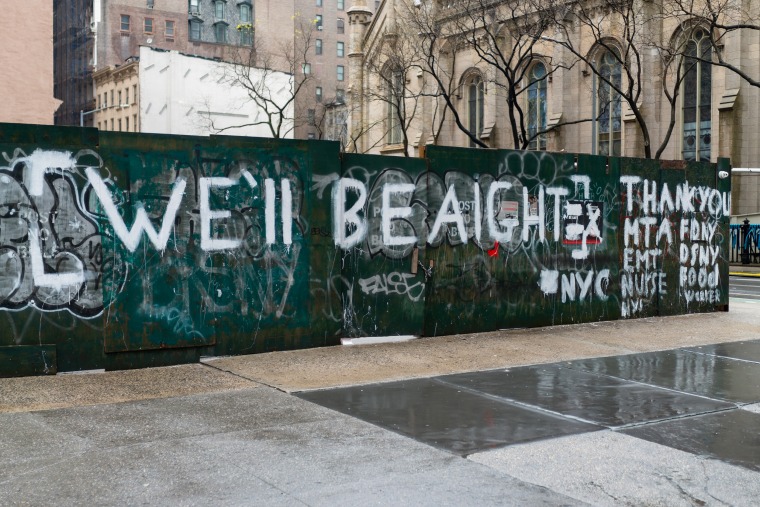
Graffiti murals that the Murrays photographed in the aftermath of the Sept. 11, 2001 reflected sentiment by the artists during that historic time. “They were taking their feelings to the wall,” Karla said.
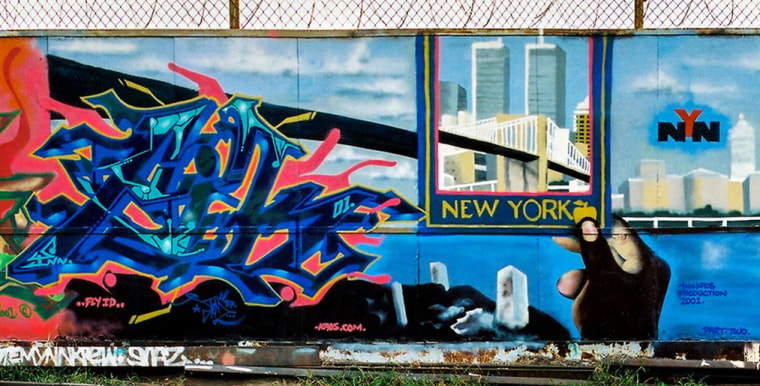
Felisbret said that the nearly empty streets and fewer people around in public now has created “a perfect environment for traditional graffiti writing.”
“It’s like sort of opened up a bit where all sorts of businesses are closed and so a lot of areas in the city are far less active than normally would be, and the graffiti artists would have more opportunity to do things without being seen,” Felisbret said.
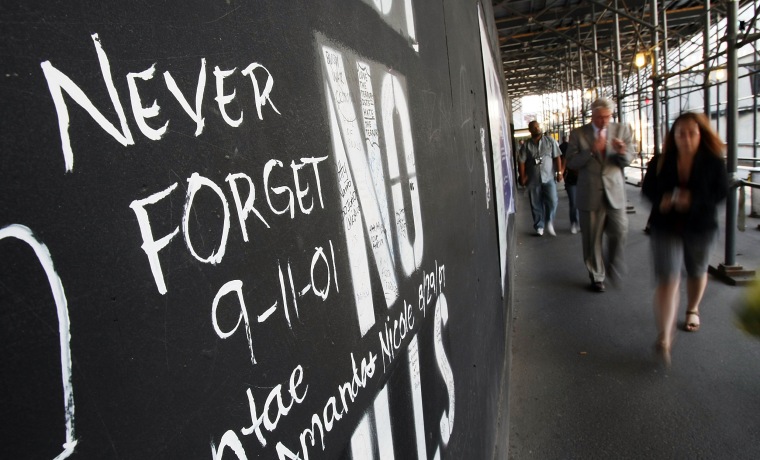
Some artists like Isauro Inocencio, 45, of Chula Vista, Calif., have reflected their personal feelings during COVID-19 but while painting a canvas at home under quarantine.
“Adapting to the quarantine life, just getting used to it and going with the flow, it’s a fluid situation,” Inocencio, a mixed-media artist and second grade elementary school teacher, said in describing his latest work.
Inocencio also saw similarities to the murals he’s seeing now being shared online during COVID-19 and the “dedication pieces going out” in the aftermath of 9/11.
Similar murals could also be seen in other U.S. cities, like Los Angeles and New Orleans, and around the world from Hamm, Germany, to Milan.

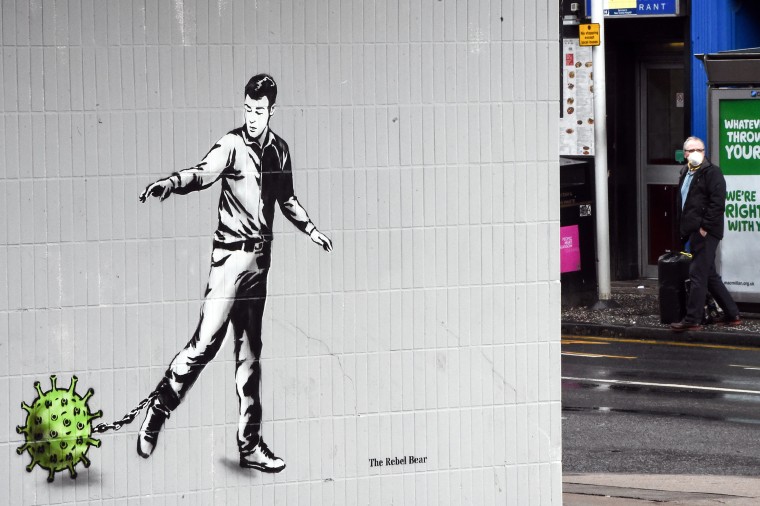
For Powers, graffiti gives him an opportunity to "speak for everybody" during the pandemic.
“For me, graffiti is a very direct response to the environment, and graffiti is a way of, I think, broadcasting the emotional weather for whoever is writing the graffiti,” he said.
Typically, no matter where Powers paints, he plays music so there’s a lot more noise.
“I have a general soundtrack that I bring that kind of overrides what’s happening in the place where I’m painting," he said. "But this time around, the silence and the quiet, just ambient beauty of the city became the soundtrack to what I was doing."
